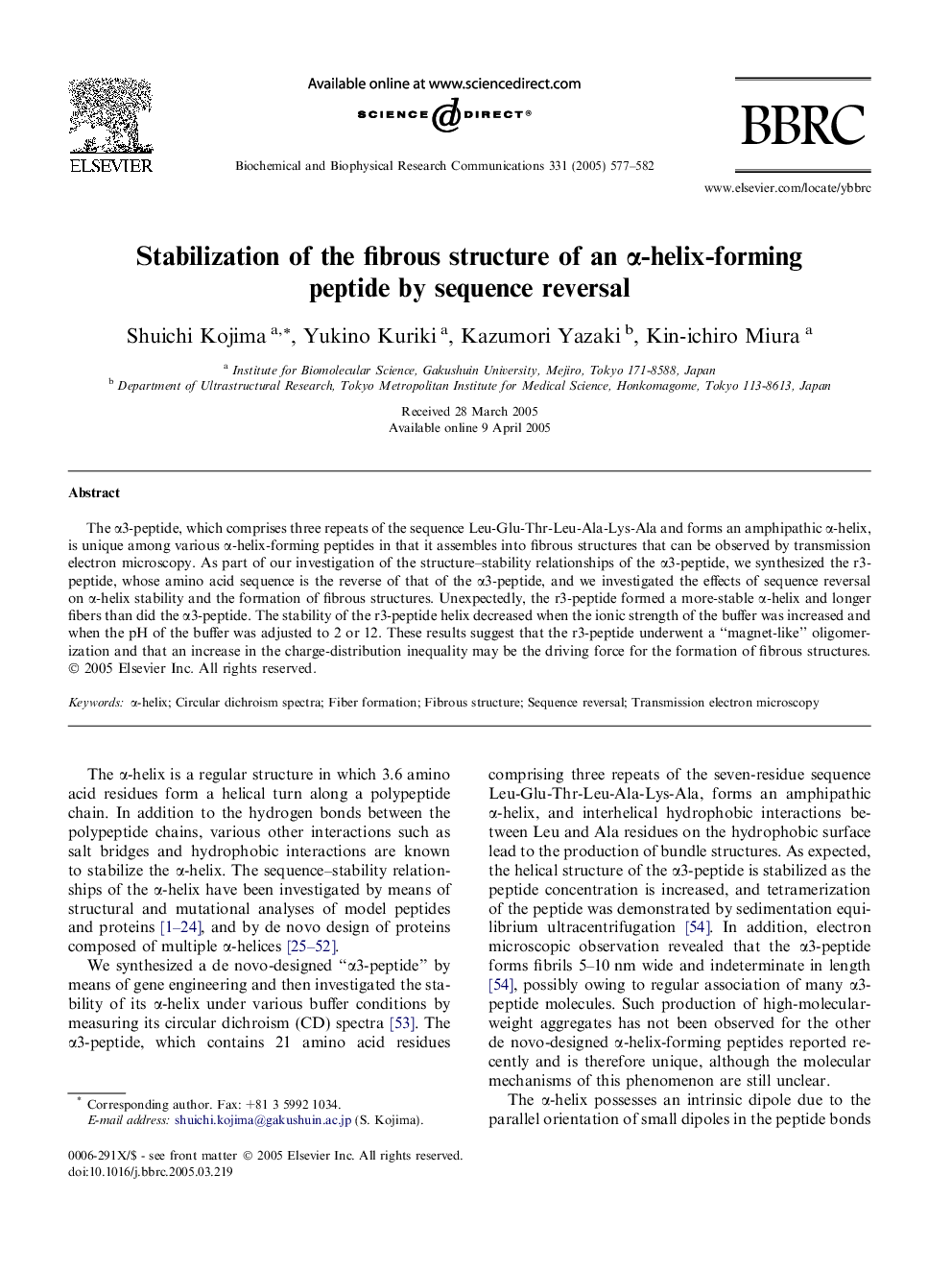| Article ID | Journal | Published Year | Pages | File Type |
|---|---|---|---|---|
| 10769991 | Biochemical and Biophysical Research Communications | 2005 | 6 Pages |
Abstract
The α3-peptide, which comprises three repeats of the sequence Leu-Glu-Thr-Leu-Ala-Lys-Ala and forms an amphipathic α-helix, is unique among various α-helix-forming peptides in that it assembles into fibrous structures that can be observed by transmission electron microscopy. As part of our investigation of the structure-stability relationships of the α3-peptide, we synthesized the r3-peptide, whose amino acid sequence is the reverse of that of the α3-peptide, and we investigated the effects of sequence reversal on α-helix stability and the formation of fibrous structures. Unexpectedly, the r3-peptide formed a more-stable α-helix and longer fibers than did the α3-peptide. The stability of the r3-peptide helix decreased when the ionic strength of the buffer was increased and when the pH of the buffer was adjusted to 2 or 12. These results suggest that the r3-peptide underwent a “magnet-like” oligomerization and that an increase in the charge-distribution inequality may be the driving force for the formation of fibrous structures.
Keywords
Related Topics
Life Sciences
Biochemistry, Genetics and Molecular Biology
Biochemistry
Authors
Shuichi Kojima, Yukino Kuriki, Kazumori Yazaki, Kin-ichiro Miura,
